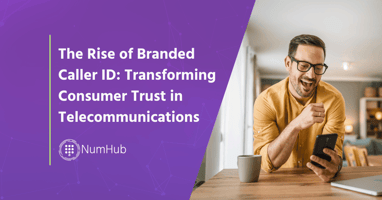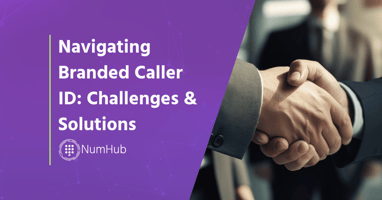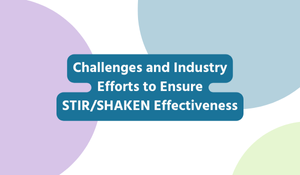In today’s fast-paced digital world, communication methods have evolved dramatically. While we...
The Call Path: Following Your Call from Origin to Delivery
Understanding the Call Path
In an age where communication is critical for both personal and business interactions, understanding how phone calls are routed is essential. The attached graphic illustrates a simplified call flow, emphasizing the importance of STIR/SHAKEN passports and the least cost routing (LCR) model. These concepts play a crucial role in ensuring that calls are delivered securely and efficiently, impacting the quality of communications and customer trust.

The Call Path Explained
At the center of the call flow is the STIR/SHAKEN Passport. This passport contains vital identifying information that confirms the authenticity of the call's origin. When a call originates, the STIR/SHAKEN system generates a token that acts as a digital signature, verifying the calling party’s identity. This is particularly important in today’s telecommunications environment, where spam and fraudulent calls are rampant.
Step 1: Call Originates
When a call is initiated, it goes through a process that involves generating the STIR/SHAKEN passport. This passport ensures that the call is legitimate and helps prevent caller ID spoofing, a common tactic used by scammers to mislead recipients about the identity of the caller.
Step 2: Routing Through Multiple Carriers
The graphic illustrates that once the call is authenticated, it is routed through various carriers labeled A, B, C, and D. 100% of the industry operates on the LCR mode, which means that calls are routed through the carrier that offers the lowest cost for the call path. While this approach can save money, it also poses risks.
Step 3: Call Delivery and the Risk of Data Alteration
A critical aspect to consider is that 60% of the time, the identifying data is changed between the origin and delivery of the call. This means that as the call traverses through different carriers, the original identifying information can be altered or stripped away. Such manipulation can undermine the trustworthiness of the call, leading recipients to question the legitimacy of incoming calls.
The Role of STIR/SHAKEN in Call Security
The STIR/SHAKEN framework is a crucial component of ensuring call integrity. It not only authenticates the identity of the caller but also works to maintain the integrity of the call as it passes through various networks. This system provides a safeguard against fraudulent activities and enhances the overall security of phone communications.
Why Is This Important?
For businesses, the implications of this call flow are significant. Companies rely on phone communications for vital operations, and any disruption or lack of trust can lead to lost opportunities. If consumers cannot trust that the call they are receiving is legitimate, they are likely to avoid answering calls from unknown numbers.
Implementing STIR/SHAKEN protocols helps businesses:
- Build Consumer Trust: By ensuring that calls are properly authenticated, businesses can increase the likelihood that customers will answer their calls.
- Improve Call Delivery Rates: As illustrated in the graphic, maintaining the integrity of the call data ensures that more calls reach their intended recipients without manipulation.
- Enhance Brand Reputation: A reliable communication system reflects positively on the brand. Companies that can demonstrate their commitment to secure and trustworthy communications will likely see increased customer loyalty.
The Challenges of Least Cost Routing
While LCR can be an effective way to manage telecommunications costs, it also presents challenges. As calls are routed through the most cost-effective carriers, the potential for data manipulation increases. This reality necessitates the need for businesses to implement robust monitoring and verification systems.
Best Practices for Businesses
To navigate the complexities of call flow and ensure reliable communications, businesses should consider the following best practices:
Adopt Branded Caller ID (BCID): By using BCID, businesses can present their brand name and logo during outbound calls. This visibility helps recipients recognize legitimate calls and increases the chances of engagement.
Implement Monitoring Solutions: Investing in monitoring tools that track the performance and integrity of call paths can help identify issues related to data manipulation early on.
Engage with Trusted Providers: Collaborating with telecom providers that prioritize security and compliance can enhance overall communication reliability.
At NumHub, we understand the importance of secure and reliable phone communications. By leveraging STIR/SHAKEN technology and advocating for best practices like Branded Caller ID, we empower businesses to navigate the challenges of call flow effectively. As we continue to advance in the telecommunications landscape, ensuring transparency and trust will be paramount in keeping businesses connected and thriving. For more information on how we can help you maintain call integrity and improve customer engagement check out our Branded Caller ID solution.
.png?width=500&height=222&name=hz_color_primary%20copy%20(1).png)
.png?width=1200&height=627&name=callpath%20(1).png)


